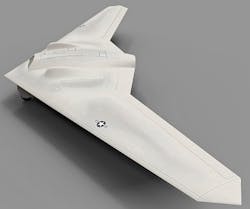Iran–U.S. RQ-170 incident has defense industry saying 'never again' to unmanned vehicle hacking
THE MIL & AERO COMMENTARY, 3 May 2016. If there's anything that continues to haunt U.S. military unmanned vehicle development, it's the December 2011 Iran–U.S. RQ-170 incident in which Iranian military cyber warfare experts commandeered a U.S. Lockheed Martin RQ-170 Sentinel stealth drone operating near the Iranian city of city of Kashmar.
U.S. military authorities initially denied that the stealthy unmanned aerial vehicle (UAV) effectively had been hacked and stolen in-flight by Iranian cyber warriors, but President Obama eventually owned-up to the cyber coup.
Whether or not the cyber warfare experts of U.S. national enemies or terrorists have hacked into other UAVs in later incidents is matter of conjecture. What's clear, however, is U.S. leaders never want this to happen again.
As a result of the Iran–U.S. RQ-170 incident cyber security for U.S. and allied unmanned vehicles has risen to the top of the Pentagon's priorities, and enabling technologies like multi-level encryption and cross-domain solutions represent hot markets in the U.S. unmanned industry.
Related: Raytheon to fix software problems in Air Force cyber security and cryptographic system
Concern for unmanned vehicle cyber security was running just beneath the surface this week at the Association of Unmanned Vehicles International (AUVSI) Exponential conference and trade show in New Orleans.
Almost any company involved in UAV command and control, situational awareness, streaming sensor downlinks, or anything else having to do with wireless communications with flying drones could be counted on at the show to bring up a variety of topics related to unmanned cyber security.
Some suggestions involve multi-level security using a combination of commercial-grade encryption coupled with National Security Agency (NSA) encryption. Other potential solutions involve so-called red-black networking architectures in which secure and non-secure data can exist side-by-side in the same box. Still others combine layers of commercial-grade encryption in approaches that the NSA is beginning to approve.
One thing's for sure: nobody's ever going to hack into and commandeer a U.S. military drone again -- not if industry and government experts have anything to say about it.

